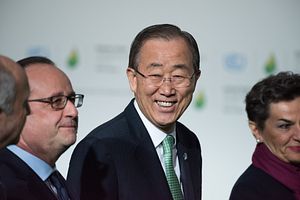Following the stormy April parliamentary elections that brought President Park Geun-hye’s Saenuri Party to its knees and paved the way for a three-party legislature, politicos are using the calm before the next National Assembly session begins at the end of this month to size up the possibilities for contenders in the December 2017 presidential race.
Ahn Cheol-soo
The former software entrepreneur has positioned himself as a wild card in South Korea’s political landscape since his presidential bid as an independent in 2012, later siding with the liberal camp for eventual defeat. But his days on the left wing seem to be over after his defection from the main opposition Minjoo Party and formation of the People’s Party in January. Following the April elections, he promptly set the stage for a 2017 bid.
He will be watched on how well he steers his third party in the upcoming Assembly session and executes his claim that a three-party system would be more productive. His presidential potential may be determined by which side of the aisle he will position his party, which has yet to cement an ideological platform.
“The People’s Party has an unstable leadership which consists of politicians who have different backgrounds but have a similar goal, e.g. presidency,” says Choi Lyong, a political science professor at Hankuk University of Foreign Studies in Seoul.
Moon Jae-in
Despite resigning amid political heat and bipartisan strife ahead of the April elections, former Minjoo Party leader Moon has maintained favor by purportedly demonstrating sacrifices for the greater good. The 2012 presidential contender stepped aside from party leadership to allow interim party chairman Kim Chong-in to tear out the carpet of its inner circles, and maintained a grace when his rivals lost face — namely, Ahn.
“Moon maintains a gentle leadership and shows his leadership with actions,” says Choi, noting his participation in a Sewol protest and making a number of yields to his rivals — including Ahn when Ahn was in the Minjoo Party.
“In short, Moon’s magic is very simple: he did the things that people like and remained calm, while his rivals are self-destructive.”
Oh Se-hoon
Ahead of the April elections, the former lawyer and Seoul mayor (2006-2011) had been a rising star in the Saenuri Party. After being reelected to lead the capital city in 2010, he stepped down during his second term amid controversy and lack of support for his proposal to limit the free school lunch program to the neediest 30 percent rather than for every child.
He recently sought to make a comeback with the support of the Saenuri’s pro-Park faction. But he was handily defeated in his bid for a seat during the April elections, casting a question mark over his political future.
Park Won-soon
After Oh bowed out of the city leadership, incumbent Seoul Mayor Park Won-soon swooped in to lead with a Mike Bloomberg-esque persona and policies emphasizing modernization and international savvy. He has touted green growth, spoken against climate change and aimed to make Seoul a role model for urban management, while generally keeping the peace among the city’s transportation unions.
Ahn’s endorsement of Park had propelled both of their popularity, leading Park to win the mayoral election and Ahn to elevate his political influence.
Park has insisted that his top priority is to serve the city of Seoul, although he consented to the idea in 2012 to run jointly with Moon and Ahn in order to preserve party unity.
Ban Ki-moon
It is no surprise that South Koreans would consider one of the top leaders of the free world as a potential candidate. U.N. Secretary-General Ban Ki-moon has resurfaced over the past two years as most favored for the job, including in March surveys, a time when local bipartisan wrangling ahead of the elections was at an ugly apex. His term at the United Nations expires at year end, raising further speculation that he might run for South Korea’s top job.
But would Ban even consider the post? He has not made such intentions clear, although he had a number of meetings with President Park last year, Choi noted.
While the December 2017 elections are over a year away, time is running out to line up new contenders. Given the massive losses in the April election, the Saenuri Party does not have many powerful cards left and has yet to name a potential candidate. Still polling among presidential possibilities is former Saenuri Party chairman Kim Moo-sung. The party’s fate is in question as it lacks new faces with potential, and there is not much time to promote someone inside, Choi says. The big question is where Ahn will align.
“The Saenuri has to make an important decision if it still wants to impress the electorates,” says Choi.
































